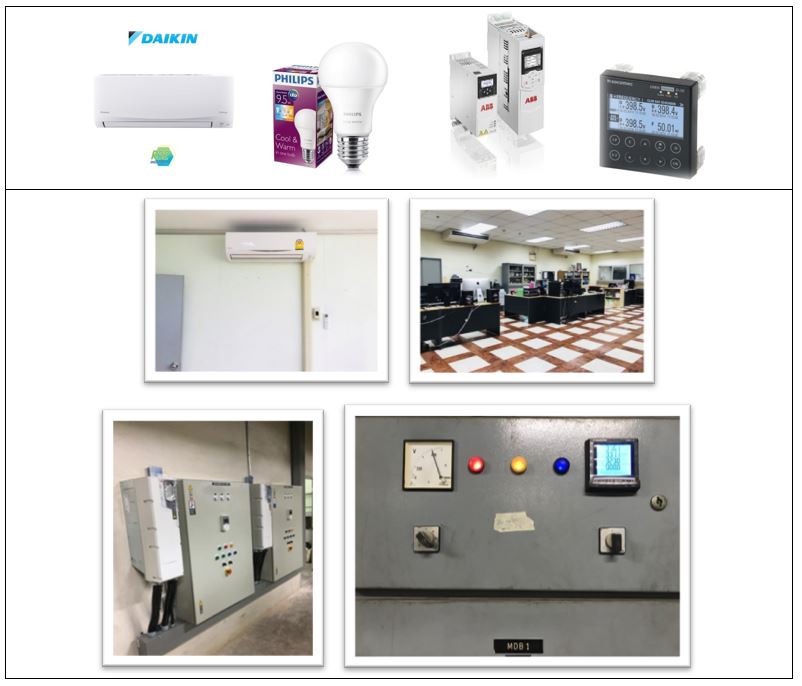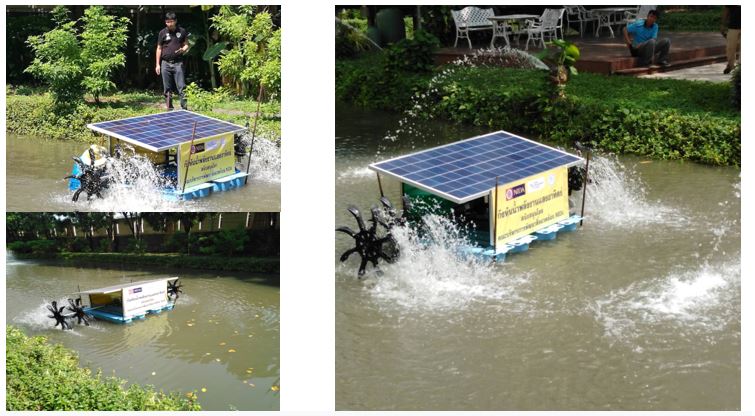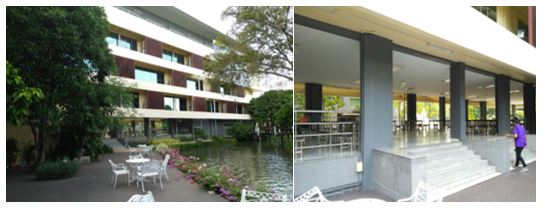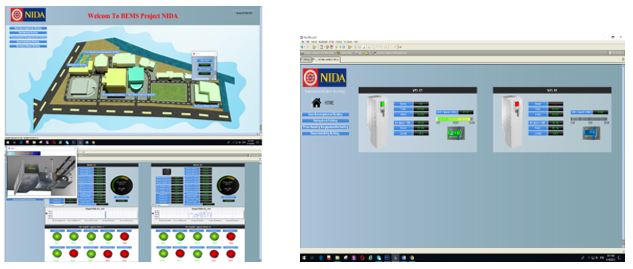ENERGY AND CLIMATE CHANGE (EC)
Energy Efficient Appliances Usage
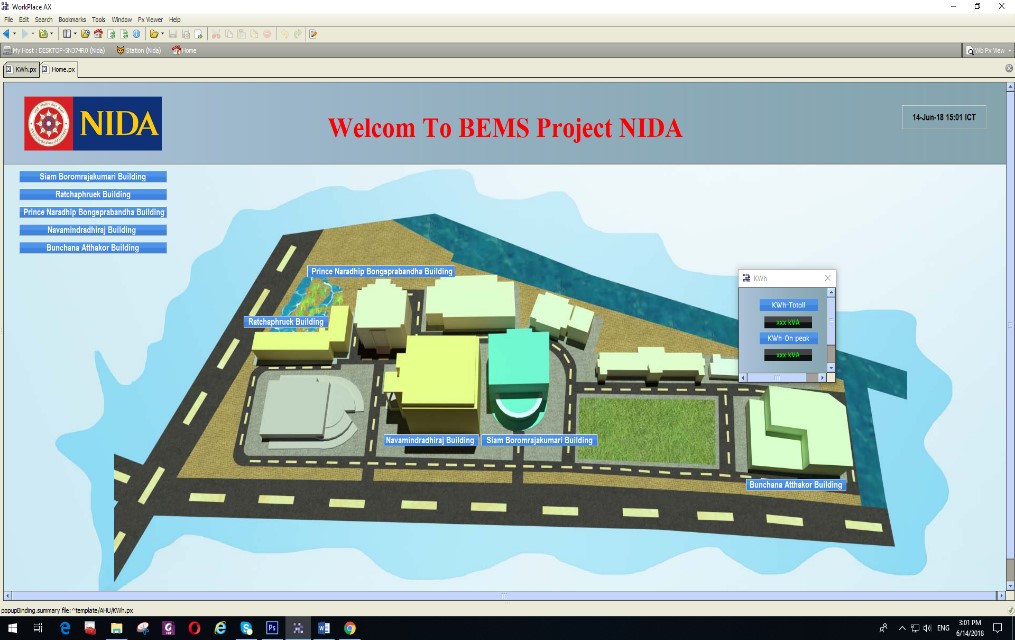
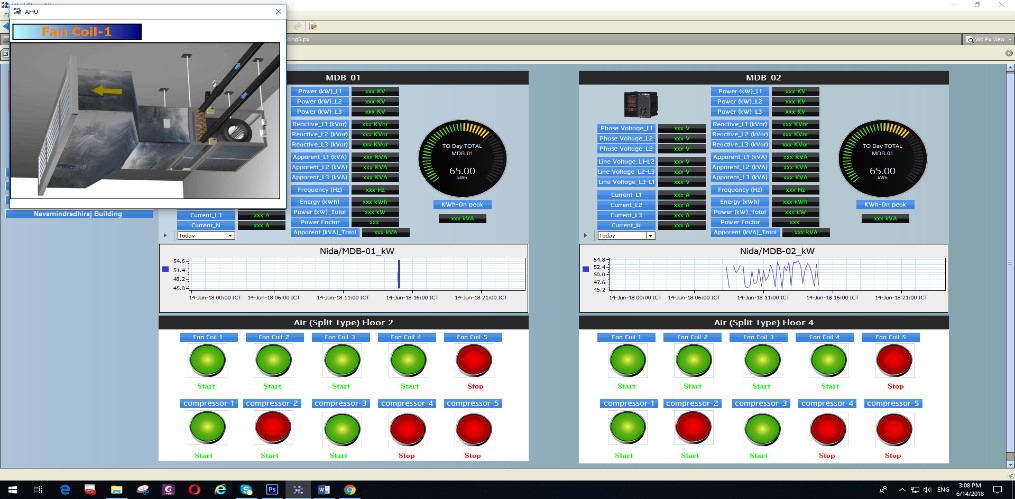


Energy Efficient Appliances Usage: Use of LED lighting and lamps , An inverter air conditioners, SD Motor Speed Control Devices, Water Pump Motor, Building Energy Management System (BEMs)
NIDA has a policy to save energy and focuses on energy management in all parts. We apply building energy management systems and use energy-saving devices i.e. LED light. We also make a campaign for personnel awareness of using energy economically and efficiently.
Smart Building Implementation
Renewable Energy Sources in Campus
1. At NIDA, two solar-powered water turbines are use in Phatthana Thara Water Park. They are run by the clean power from solar pv and clean the water by adding oxygen into the pool, where hundreds of fishes are living.
2. On the rooftop of Navamindradhiraj Building solar pv panels are installed.
3. We use an EV cart to serve elder staffs as on-demand basis. Moreover, we provide an EV charger for EV cars.
Electricity Usage per Year (in Kilowatt hour)
Electricity Usage (kWh) on NIDA Campus
The total electricity usage of National Institute of Development Administration campus in 2018 is 9,807,000 kWh. On the main campus area of NIDA, electricity is mainly used for lighting and air condition.
Elements of Green Building Implementation as Reflected in All Construction and Renovation Policies
1. Natural ventilation
2. Full natural daylight
3. Building energy manger
The elements of green building in NIDA Campus implemented as follow:
1. Natural ventilation and shading from big trees Most of buildings in NIDA are designed for natural ventilation so that they meet the basic green building standard of Thailand. With the cross natural ventilation, particularly on the ground floor areas, buildings are cooled down in summer. Moreover, many big trees around buildings provide shade for activities both on ground and second floors.
2. Full natural daylight The second green building element is the natural daylight that is designed to reach most of the large buildings’ atrium areas. In the same way, most of staffs’ offices and class rooms are design to get much of natural daylight so that we do not have to turn on light bulbs all the time. During daytime, classrooms can get daylighting from nature.
3. Energy efficiency program and Building energy manger (BEMS) The third green building element includes 2018 energy efficiency enhancement program which NIDA got budget allocation of about 670,000 U.S.$ to change all the light bulbs to LED, improve air conditioners and apply building energy management system. Our staffs are also trained to become building energy managers.


